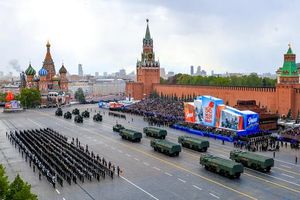On Saturday, May 10, 2025, tensions between India and Pakistan escalated dramatically as both nations exchanged missile strikes, bringing them closer to all-out war. This latest round of hostilities marks a significant escalation in a conflict that has simmered since a deadly attack on Hindu tourists in Indian-administered Kashmir last month, which resulted in the deaths of 26 civilians. India accused Pakistan of harboring militants responsible for the attack, igniting a series of retaliatory military actions.
Reports indicate that the Pakistani military launched a counter-offensive operation, dubbed "Operation Bunyan Ul Marsoos," targeting several Indian military bases, including a missile storage facility in the northern region. This operation followed Indian airstrikes on three Pakistani air bases, including the Noor Khan air base in Rawalpindi, located just six miles from the capital, Islamabad. Witnesses in Rawalpindi described hearing multiple loud explosions and seeing a large fireball in the sky, leading to panic among residents.
Colonel Sofiya Qureshi, a spokesperson for India’s defense ministry, confirmed that the strikes began shortly after 1 AM, causing limited damage to military installations in Udhampur, Pathankot, Bhuj, and Adampur. She also stated that Pakistan attempted to hit civilian infrastructure in Indian-administered Kashmir, which India condemned as escalatory. "We responded because our patience had reached its limit. If they stop here, we will also consider stopping," said Ishaq Dar, Pakistan's foreign minister, indicating a willingness to de-escalate if India refrains from further attacks.
In a televised statement, Lt. Gen. Ahmed Sharif Chaudhry, the chief spokesman for the Pakistani military, warned that India was pushing the region toward a dangerous war. He stated, "Now, you just wait for our response," emphasizing the seriousness of the situation. Following the missile exchanges, Pakistan’s Prime Minister Shehbaz Sharif convened a meeting of the National Command Authority, the body responsible for the country's nuclear command and strategic deterrence policy.
Despite the heightened tensions, both nations expressed a desire to avoid further escalation. Indian foreign secretary Vikram Misri described the response to Pakistan's actions as measured and dismissed Islamabad's claims of significant damage to Indian defenses as propaganda. He stated, "India is committed to non-escalation, provided the Pakistan side reciprocates." On the other hand, Wing Commander Vyomika Singh reiterated India's stance, highlighting that their military operations targeted only identified military sites.
The conflict has resulted in significant casualties, with estimates indicating that at least 48 people have died since the clashes intensified on May 7, 2025. The ongoing violence has led to widespread fear among civilians living near the border, prompting many to stock up on essential supplies in anticipation of prolonged hostilities. Residents in Jammu reported a complete blackout as heavy shelling continued, with many expressing their exhaustion from the relentless fighting.
Internationally, the situation has drawn concern from global powers. G7 foreign ministers have called for maximum restraint from both sides, warning that further military escalation poses a serious threat to regional stability. They urged both countries to engage in direct dialogue to resolve the conflict peacefully. The U.S. Secretary of State Marco Rubio also reached out to Pakistani army chief Asim Munir, advocating for de-escalation and constructive talks between the two nations.
As the situation unfolds, both India and Pakistan have mobilized additional military forces along their borders. India's military announced it had begun large-scale mobilization, including activating its reserve territorial army to ensure operational readiness. Meanwhile, Pakistan has been observed moving ground forces toward forward areas, indicating a potential intent for further escalation.
The use of drone warfare has also emerged as a new dimension in this conflict, with both countries employing unmanned aerial vehicles to conduct surveillance and attacks. The introduction of drones into the conflict has raised concerns about how this technology could reshape future hostilities between the two nuclear-armed nations.
As the world watches closely, the stakes remain high. The historical backdrop of India-Pakistan relations, marked by three previous wars and ongoing disputes over Kashmir, adds layers of complexity to the current situation. The potential for miscalculation and unintended consequences looms large, as both nations navigate a precarious path amid increasing military tensions.
In summary, the events of May 10, 2025, signify a critical juncture in the India-Pakistan conflict. With both sides on high alert and military operations intensifying, the possibility of a broader confrontation remains a pressing concern for regional and global stability. The international community continues to call for dialogue and restraint, hoping to avert a full-scale war that could have devastating consequences for millions.




